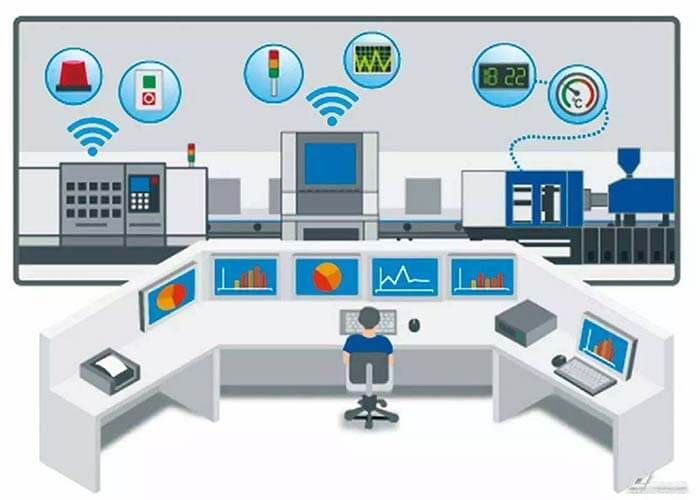Today, companies are using Industrial IoT technologies to automate previously manual processes and manage their assets remotely to discover new efficiency gains and cost savings.
The main industrial IoT applications
We’ll take a look at how the major 4 Industrial IoT applications changing the game for businesses in four key ways.
Beyond the consumer side, the IoT is changing the way businesses operate. Thanks to the increasingly widespread availability of high-speed network connections, more and more companies are leveraging the Industrial IoT to improve productivity and equipment maintenance.
When the public thinks of the IoT, people often think of smart home devices such as thermostats and security systems. However, the IoT ecosystem extends far beyond consumer use, leading to the emergence of the Industrial IoT.
Predictive Maintenance
Predictive maintenance is critical to protecting and extending the life of industrial assets such as wind turbines, generators, and HVAC systems.
Traditional maintenance procedures follow a fixed schedule based on time or usage, such as every 12 months or 1,000 cycles. However, because this approach is based on average assumptions, rather than the actual condition of the equipment, companies can end up repairing equipment unnecessarily.
The IoT transforms predictive maintenance into an agile and responsive process. Using IoT devices equipped with sensor microprocessor units can monitor the condition of equipment and automatically send alerts when it shows signs of damage.
Integrated oil and gas companies benefit most from IoT predictive maintenance applications. According to Hydrocarbon Publishing, between 2009 and 2013, more than 2,200 refineries in the U.S. alone were shut down due to unplanned downtime.
These unplanned outages cost the global process industry 5 percent of its total production (equivalent to $20 billion per year). Ineffective maintenance practices also cause unplanned downtime, which costs refineries worldwide an average of $60 billion in additional operating costs each year.
Asset Tracking
Similarly, equipment rental companies use the Industrial Internet of Things to implement predictive maintenance on their various earthworks and trucks. These monitoring solutions reduce the cost of sending mechanics to the field to deal with unexpected breakdowns.
GPS-enabled IoT devices also provide rental companies with remote, real-time visibility into the location and distribution of assets in the field. Companies can use this data to improve logistics planning and customer service and in turn schedule more optimal pickup and return areas.
Soon, rental equipment may even be returned automatically. In 2017, Ericsson partnered with equipment rental provider Cramo and power tool manufacturer Husqvarna to streamline the return process of rental equipment. This collaboration led to an innovative proof-of-concept device that eliminates the need for routine checks when returning tools.
Supply Chain Management
Visibility is the single most valuable element of supply chain management. Despite this, more than 60 percent of companies still lack complete supply chain visibility, and the average inventory accuracy threshold for U.S. retailers is only 63 percent.
These blind spots lead to untold inefficiencies, customer dissatisfaction, and billions of dollars in financial losses each year. Fortunately, recent technological advances have made it possible to illuminate these blind spots with IoT devices.
Today, a small, 4G-connected microcontroller can identify, locate and monitor mobile assets in real time from virtually anywhere on the planet. At the same time, more powerful and affordable IoT platforms allow data to be easily received, organized, and analyzed through the cloud.
In addition, features such as automated alerts and event reporting allow organizations to be more agile and responsive in the face of supply chain disruptions.
In general, the value that IoT solutions can provide to supply chain management varies with the size and complexity of the supply chain.
The larger the supply chain and the more participants are involved, the greater the opportunity for IoT solutions to reduce inefficiencies and improve visibility.
Compliance Monitoring
Each year, U.S. manufacturers spend an estimated $192 billion on compliance with economic, environmental, and workplace safety regulations. Within these astronomical figures lie countless opportunities for efficiency gains.
IoT technology has shown tremendous potential. By remotely monitoring sensitive assets, IoT devices enable companies to significantly reduce the costs associated with regulatory compliance. Some examples are listed below.
Tracking equipment usage
Embedded sensors provide companies with real-time data on the geographic location, usage, and maintenance requirements of expensive machinery such as cranes and bulldozers.
Optimize site logistics
Similarly, IoT sensors improve workflow by automatically ordering materials and suggesting the best locations for machines and personnel. They also suggest routes for transporting equipment and materials within the site.
Improve worker safety
Web-connected wearables such as helmets, undershirts, and boots transmit the geolocation coordinates of workers to the cloud for analysis. These analytics can identify hazardous site conditions and dangerous activities.
By combining machine learning with industrial IoT data, supervisors can minimize safety risks to workers and equipment.
Start Your Industrial IoT Journey
The industrial IoT journey begins with a reliable platform that provides all the hardware, software, and connectivity needed to build an IoT system.
Some companies choose to build their own custom platform from scratch. This requires not only domain-specific development expertise, but also the resources needed for scalability, network connectivity, and security.
Fortunately, there is a simpler option. Rather than reinventing the wheel, enterprises can use an IoT platform that is customized specifically for their business.
You may also be interested in the below articles.
6 Rules And Techniques For PCB Wiring




